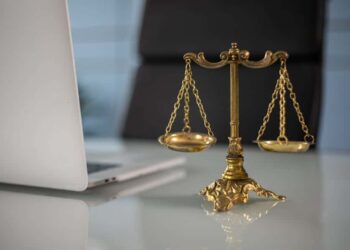Personal injury cases in Miami are on the rise, affecting not only residents but also the countless tourists who flock to the city every year. When accidents occur, understanding who is responsible can be a daunting task.
This article aims to demystify the concept of liability in personal injury cases, providing clear and concise information to help you navigate this complex legal landscape.
Exploring the Different Types of Personal Injury Cases
Personal injury cases cover a wide range of incidents where individuals suffer harm due to the actions or negligence of others. Some of types include slip and fall incidents, car accidents, and medical malpractice. Car accidents often occur due to reckless driving, distracted driving, or driving under the influence. Slip and fall cases typically arise from hazardous conditions on a property, such as uneven surfaces. Medical malpractice involves healthcare professionals failing to provide the standard of care, leading to patient harm. Each type of personal injury case has unique considerations, but they all revolve around establishing who is responsible for the injury.
Personal Injury Lawyers: Guiding You Through the Legal Process
Navigating the legal landscape of personal injury cases can be overwhelming, which is why having a personal injury lawyer is essential. These legal professionals specialize in personal injury law and offer invaluable assistance to those seeking justice and compensation. A personal injury lawyer can help you understand your rights, gather and organize evidence, and represent you in negotiations or court proceedings.
They can negotiate with insurance companies on your behalf, aiming to secure a settlement that covers lost wages and medical expenses. Moreover, if a satisfactory settlement cannot be reached, they can take your case to court, advocating for your rights and interests. Having a local Miami personal injury lawyer by your side significantly increases the chances of a favorable outcome.
Determining Who is at Fault in Personal Injury Cases
Determining liability in personal injury cases involves understanding several factors, including negligence, duty of care, and causation. Negligence is a key concept, referring to a party’s failure to act with the level of care that a reasonable person would in similar circumstances. The injured party must prove that the responsible party owed them a duty of care and breached it, directly causing the injury. For instance, drivers have a duty to follow traffic laws and drive safely to prevent accidents. When they fail to do so, they may be considered negligent. Liability is determined by assessing these factors and gathering evidence to support the claim.
The Role of Negligence: A Critical Element in Personal Injury
Negligence plays a central role in personal injury cases as it forms the basis for establishing liability. It involves demonstrating that the responsible party’s actions or inactions directly caused the injury. For example, a driver who runs a red light and causes a collision may be found negligent if their actions led to injuries. Proving negligence requires showing that the responsible party did not act as a reasonable person would in similar circumstances. This can involve examining their behavior, actions, and any breaches of duty. Successfully proving negligence is essential for securing compensation and holding the responsible party accountable.
Shared Fault and Comparative Negligence: What Happens When More Than One Party is Responsible?
In some personal injury cases, more than one party may share the fault for the incident. This is where comparative negligence comes into play. It allows for the apportioning of liability among multiple parties based on their degree of fault. For instance, if two drivers are involved in an accident, and both are partially responsible, the court may assign a percentage of fault to each party. The compensation awarded is then adjusted based on the assigned percentages. Understanding comparative negligence is crucial as it impacts the amount of compensation an injured party may receive.
The Importance of Evidence in Proving Liability
Evidence is crucial in personal injury cases, as it serves as the foundation for proving liability. Without solid evidence, it can be challenging to demonstrate who was at fault and what damages occurred. Evidence can come in various forms, including eyewitness accounts, photographs of the accident scene, medical records, and police reports. Each piece of evidence contributes to creating a clear picture of the incident and helps establish the chain of events that led to the injury.
For instance, in a car accident case, photographs showing the damage to vehicles and the positioning on the road can help determine which party was at fault. Medical records can illustrate the extent of the injuries sustained and connect them to the incident. Eyewitnesses can provide valuable testimonies that corroborate the victim’s account. All these elements together form a compelling case that supports the injured party’s claim and increases the likelihood of receiving fair compensation.
Insurance Companies: Friends or Foes in Personal Injury Cases?
Insurance companies play a significant role in personal injury cases, as they often handle the financial compensation for accidents. However, dealing with insurance companies can be challenging. Their primary goal is to minimize the payout to protect their bottom line, which means they may use various tactics to reduce the compensation offered to the injured party.
It is crucial to be cautious when communicating with insurance companies and not accept any settlement offers without consulting a personal injury lawyer. A lawyer can help ensure that the settlement reflects the true extent of your damages and losses, providing you with the financial support needed for recovery.
Settlement vs. Trial: Understanding Your Options
When pursuing a personal injury case, you generally have two options: settling the case out of court or taking it to trial. Each approach has its advantages and disadvantages. Settlements are often quicker and less expensive than going to trial. They involve negotiating with the opposing party and reaching an agreement on compensation. Settlements also provide a certain outcome, as both parties agree on the terms.
On the other hand, going to trial can potentially result in higher compensation if the court rules in your favor. However, trials can be lengthy, costly, and unpredictable. It involves presenting your case before a judge or jury, who will ultimately decide the outcome. It is essential to weigh these options carefully with the guidance of a personal injury lawyer to determine the best course of action for your specific situation.
Understanding liability in personal injury cases is vital for anyone seeking justice and compensation after an accident. Determining who is responsible involves navigating complex legal concepts, gathering evidence, and often dealing with insurance companies. Hiring a personal injury lawyer can make this process more manageable, ensuring your rights are protected and your case is handled effectively. Whether settling or going to trial, knowing your options and taking the appropriate steps after an accident can significantly impact the outcome of your case. With the right guidance and information, you can confidently pursue the compensation and justice you deserve in Miami’s legal landscape.










